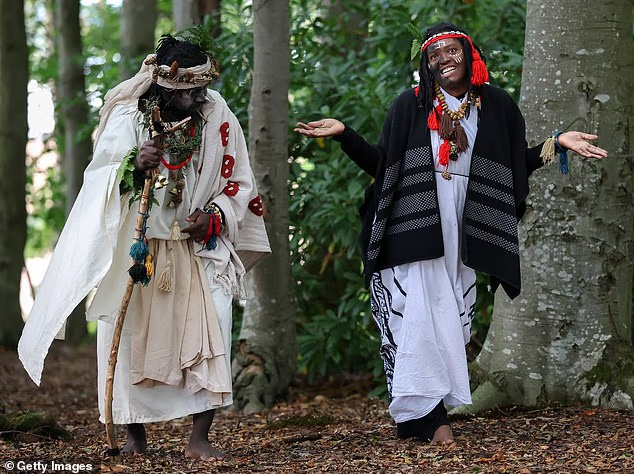EDINBURGH: When most people imagine Scotland, they think of misty glens, Highland bagpipes, castles, and tartan kilts. Yet beneath these powerful symbols lies a lesser-known truth: Africans and people of African descent have been part of Scotland’s fabric for centuries.
Their story is not just one of migration, but one of origin, presence, and contribution woven into the nation’s identity from its earliest encounters with the wider world.
Historical records suggest that Africans first arrived in Scotland during the late medieval and Renaissance periods.
African envoys, sailors, and even musicians appeared in the courts of European monarchs, and Scotland was no exception.
Some scholars point to the court of King James IV in the early 1500s, where Moors (a term then used to describe Africans) were employed in courtly duties, including music and performance.
These appearances though rare show that Scotland’s exposure to African people predates the transatlantic slave trade.
By the 17th and 18th centuries, Scotland’s relationship with Africa deepened through the transatlantic slave trade.
Scots played prominent roles as plantation owners, ship captains, and traders in the Caribbean and the Americas. Towns like Glasgow, Greenock, and Edinburgh benefited enormously from the trade in sugar, tobacco, and cotton all of which relied on enslaved African labor.
At the same time, Africans themselves began arriving in Scotland, often as enslaved servants or attendants brought back by wealthy merchants.
While slavery was never formally codified under Scots law, many African men, women, and children lived in conditions of servitude. Yet others were manumitted, integrated into local communities, and began building small but significant Black presences across Scottish society.

picture of African Origin in Scotland.
Out of this history emerged figures of remarkable significance. Ignatius Sancho, though born on a slave ship, spent much of his life in Britain as a writer, composer, and intellectual. His connections extended into Scotland, where abolitionist thought was gaining momentum.
Olaudah Equiano, whose autobiography became a cornerstone of the abolitionist movement, also engaged with Scottish audiences and thinkers.
African Scottish interactions were not only about oppression they also shaped Scotland’s intellectual and moral landscape.
Scottish philosophers and theologians debated the morality of slavery, while African voices challenged a society that profited from their exploitation. This dialogue would later fuel abolitionist campaigns in which Scotland played an influential part.
The arrival of African and Caribbean soldiers during both World Wars expanded Scotland’s Black presence. Many stayed after the wars, forming the nucleus of communities in Glasgow, Edinburgh, and Dundee.
By the mid-20th century, Scotland was home to students from Nigeria, Ghana, and other parts of Africa who came to study at prestigious universities.
Some, like Kwame Nkrumah of Ghana and Nnamdi Azikiwe of Nigeria, carried their Scottish experiences back home and became key figures in African independence movements.
Today, Scotland’s African and Black communities are visible across every sector. Politicians of African descent, such as Kaukab Stewart, have made their mark in Holyrood.
In music and the arts, African-Scottish creatives blend Highland traditions with African rhythms, producing cultural forms that embody hybridity. In sports, Black athletes proudly represent Scotland on global stages.
Yet challenges remain. Racism, underrepresentation, and economic inequality persist, with Black Scots often navigating dual identities in a nation still adjusting to multiculturalism.
The Black Lives Matter protests of 2020 resonated deeply in Scotland, sparking debates about statues, colonial memory, and the legacy of the slave trade in shaping its cities.
The story of Africans in Scotland is not one of marginal outsiders but of essential participants in its past and present.
From the presence of Africans in the royal courts of the 16th century, to intellectual giants shaping abolitionist thought, to modern-day Scots of African heritage reshaping politics and culture, the Black presence is foundational, not peripheral.
For too long, Scotland’s story has been told in narrow terms—Highland versus Lowland, Gaelic versus English.
The African-Scottish narrative expands that story, reminding the world that Scotland is not a monoculture but a nation built from connections, exchanges, and diverse origins.
In the tartan weave of Scottish identity, the African thread is not merely decorative it is integral. To recognize it is to see Scotland’s history in full color, and to acknowledge that Black Scots are not just present but have always been part of what Scotland is and what it is becoming.



